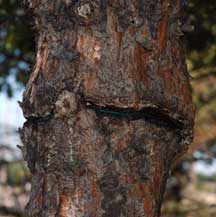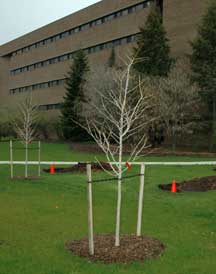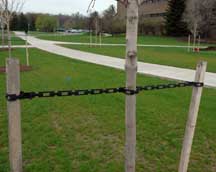To stake or not to stake?
Editor’s note: This article is from the archives of the MSU Crop Advisory Team Alerts.
Springtime is tree planting time. A frequent question that arises is whether or not newly planted trees should be staked. In Michigan, staking is frequently necessary when planting bare-root, container-grown, and even some balled in burlap (B&B) trees to prevent blow-over due to our prevailing winds. Many B&B conifers are dug from sandy soils resulting in a loose rootball. The key in staking trees is to ensure that it is done properly. Here are some keys to proper staking.
Use appropriate materials. Use commercially available strapping and staking materials to reduce the risk of excessive rubbing and damage to tree trunks. Do not use rope or bare wire.
Stakes should be driven outside the rootball and deep enough to penetrate through backfill and into native soil to improve stability.
Remove staking after one or two years. Within one year of transplanting most trees will have established sufficient new roots into native soil to be wind firm. Staking material left on trunks can eventually girdle new trunks.

Removing staking material after one or two years is critical. The wire used to stake this pine has girdled the tree.
The two stake method is simple and works well for a variety of tree. Larger trees and conifers may require three stakes or guyin.


Two stakes are adequate to stabilize many trees. Use appropriate material to stake trees, such as commercial tree tries, to avoid trunk damage.



 Print
Print Email
Email
